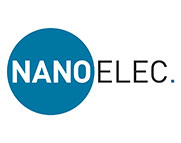The Nanoelec/Smart Imager program is committed to providing relevant and real-time environment analysis by vision. It could be the greatest technical challenge at Nanoelec for the coming years.
The aim of IRT Nanoelec’s Smart Imager program is to develop the technologies needed for the next generation of imagers, which will allow the transition from image generation to the analysis of the information included in these images, on the very sensor itself, in order to perceive a scene, understand the situation and intervene on it. This transition represents a very real disruption and a paradigm shift, with the computing and memory issues becoming preponderant, in addition to image generation. This revolution implies the use of artificial intelligence on the image sensor itself.
The consortium’s goal is to develop 3D stacking technologies in order to implement artificial intelligence functions on the sensor itself. This is why we are working both on the components and on the software, to transition our image sensor concepts from image generation to data generation, enabling a situation to
be analyzed.
Our program is very close to two other activities at Nanoelec: the System Lab initiative, on the search for new multi-spectrum imaging applications, and Displed, -new generations of displays- on the simulation & design tools for hybrid bonding components and technologies for 3D architectures.





